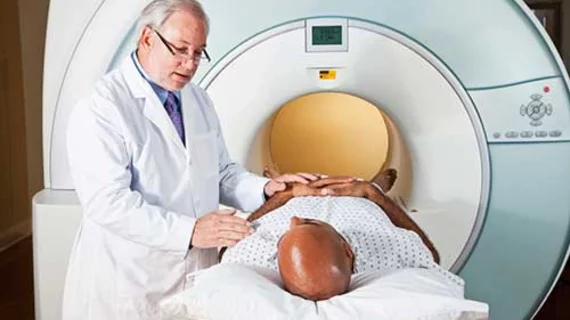Gap in quality of care between native, non-native English speakers narrowing
Patients with limited English proficiency are 4 percent less likely to receive a prompt MRI, according to research published this week in the Journal of the American College of Radiology. But when accounting for factors like hospital environment, age group and priority, both English and non-English speakers appear to be receiving the same quality of care.
That finding was somewhat of a surprise to lead investigator Edward L. Sutherland, MD, and his colleagues at William Beaumont Hospital in Royal Oak, Michigan, who analyzed 24,219 patients at their institution in the hopes of identifying a gap—or lack thereof—in the quality of care given to proficient English speakers and their non-native counterparts, who make up a good 9 percent of the U.S. population.
“The growing population of Americans with limited English proficiency (LEP) has heightened the need for translation services in hospitals and increased interest in the effect of LEP on healthcare delivery,” Sutherland and co-authors wrote in JACR. “LEP is a barrier to comprehension of the patient’s own medical condition and leads to difficulty in obtaining informed consent.”
The language barrier can pose a considerable threat to good treatment, the authors said, because there’s a lack of solid communication between hospital staffs and their patients. Translators and interpreters help ease that discomfort, but they aren’t exactly convenient and might delay care in critical cases of stroke or neurological difficulties.
Sutherland and his team evaluated tens of thousands of patients’ data, choosing MRI as their target modality. Alongside tracking each patient’s preferred language, gender, race, age, order priority and performing hospital, they noted how long it took each person to get from their diagnosis to an exam room.
According to the study, bivariate analysis suggested older patients and those with limited English proficiency were more likely to see a longer time-to-exam wait, but multivariate analysis found English proficiency wasn’t linked to longer wait times.
“Our results show that there is no statistically significant difference in time-to-exam in patients who preferred to communicate in English compared with patients with a non-English language preference when age, order priority and performing hospital were accounted for,” Sutherland et al. wrote.
The authors said that, logically, limited English proficiency has the potential to delay care at any point where communication is involved.
“Why, then, did our study find no significant difference in time-to-exam between language groups?” they wrote.
The authors said the lack of difference could have something to do with interpreters, who historically have been associated with longer patient stays just due to the nature of their job. Some clinicians avoid speaking with LEP patients entirely to avoid that possibility, which could explain some of the results. It’s also likely the hospital staff in this case came from the same area as the patient population, meaning physicians and their patients might already speak the same languages.
“To our knowledge, this is the first study that evaluates the effect of patient language preference on the time to obtain an MRI,” Sutherland and colleagues said. “This finding supports the effectiveness of the protocols and resources in place to support patients with LEP at the sponsoring health system.”

